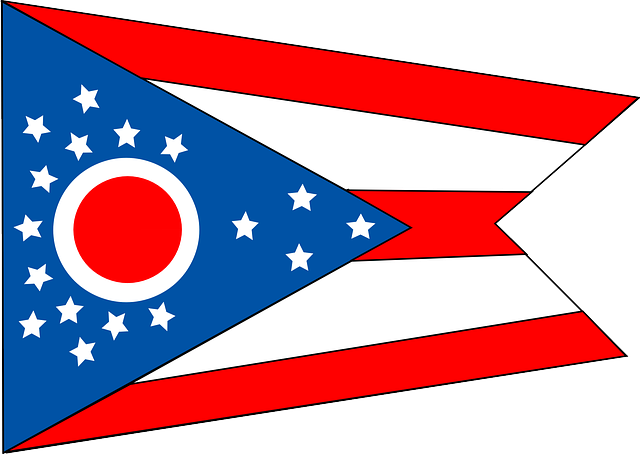Share This Article:

Glossary Check: Ohio Alternate Employer Organizations, Professional Employer Organizations
17 Jul, 2023 Frank Ferreri

Columbus, OH (WorkersCompensation.com) -- Under Ohio's workers' compensation law, special provisions apply to alternate employer organizations and professional employer organizations.
To help understand those concepts better, the following information breaks down those terms and what they mean.
| Terms | Definitions |
| Alternate employer organization | An AEO is a sole proprietor, partnership, association, limited liability company, or corporation that enters into an agreement with one or more client employers for purposes of providing human resource management services and sharing employer responsibility and liability. "AEO" does not include a service agency that is in the business of employing individuals for the purpose of utilizing the services of the individuals for a temporary period of time. |
| Professional employer organization | A PEO is a sole proprietor, partnership, association, limited liability company, or corporation that enters into an agreement with one or more client employers for the purpose of co-employing all or part of the client employer's workforce at the client employer's work site. "PEO" does not include a service agency that is in the business of employing individuals for the purpose of utilizing the services of the individuals for a temporary period of time. |
| Client employer | A client employer is a sole proprietor, partnership, association, limited liability company, or corporation that enters into a professional employer organization agreement and is assigned shared employees by the professional employer organization. |
| AEO agreement | An AEO agreement is a written contract between a client employer and an alternate employer organization to provide human resource management services and to share employer responsibilities and liabilities. |
| PEO agreement | A PEO agreement is a written contract to co-employ employees between a professional employer organization and a client employer with a duration of not less than 12 months. |
| PEO reporting entity | A PEO reporting entity is two or more professional employer organizations that are majority-owned or commonly controlled by the same entity, parent, or controlling person and that satisfy reporting entity control rules as defined by the financial accounting standards board and under generally accepted accounting principles. |
| Shared employee | A shared employee is an individual intended to be assigned to a client employer on a permanent basis, not as a temporary supplement to the client employer's workforce, who is co-employed by a professional employer organization and a client employer pursuant to a professional employer organization agreement. |
| Trade secret | "Trade secret" means information, including the whole or any portion or phase of any scientific or technical information, design, process, procedure, formula, pattern, compilation, program, device, method, technique, or improvement, or any business information or plans, financial information, or listing of names, addresses, or telephone numbers, that satisfies both of the following: (1) It derives independent economic value, actual or potential, from not being generally known to, and not being readily ascertainable by proper means by, other persons who can obtain economic value from its disclosure or use. (2) It is the subject of efforts that are reasonable under the circumstances to maintain its secrecy. |
| Working capital | Working capital is the excess of current assets over current liabilities as determined by generally accepted accounting principles. |
| Worksite employee | A worksite employee is an individual assigned to a client employer on a permanent basis, not as a temporary supplement to the client employer's workforce, and who is employed by both an alternate employer organization and a client employer pursuant to an alternate employer organization agreement. |
| Policy number | Also known as a "risk number," the policy number is the identification number that the Bureau of Workers' Compensation assigns to an employer. |

AI california case management case management focus claims compensability compliance courts covid do you know the rule emotions exclusive remedy florida FMLA fraud glossary check Healthcare health care hr homeroom insurance insurers iowa leadership medical NCCI new jersey new york ohio osha pennsylvania roadmap Safety state info technology texas violence WDYT what do you think women's history women's history month workcompcollege workers' comp 101 workers' recovery Workplace Safety Workplace Violence
Read Also
- Apr 24, 2025
- Frank Ferreri
- Apr 24, 2025
- Liz Carey
About The Author
About The Author
-
Frank Ferreri
Frank Ferreri, M.A., J.D. covers workers' compensation legal issues. He has published books, articles, and other material on multiple areas of employment, insurance, and disability law. Frank received his master's degree from the University of South Florida and juris doctor from the University of Florida Levin College of Law. Frank encourages everyone to consider helping out the Kind Souls Foundation and Kids' Chance of America.
More by This Author
Read More
- Apr 24, 2025
- Frank Ferreri
- Apr 24, 2025
- Liz Carey
- Apr 24, 2025
- Claire Muselman
- Apr 24, 2025
- Chris Parker
- Apr 24, 2025
- Anne Llewellyn
- Apr 23, 2025
- Claire Muselman




